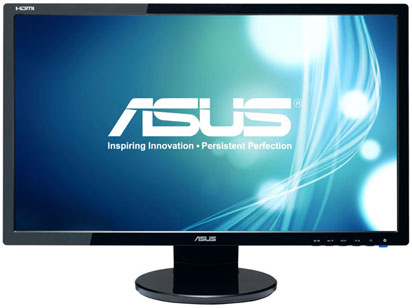
Introducing: ASUS VE247H is the color of everything

It brought “fate” so that we have to write two ASUS TFT presentations for you in a row. In fact, the plan was for this article to appear first, and only the PA246Q to come second, but perhaps needless to say, I couldn’t stand it and unpacked the latter and put it on the table in front of me. This later turned out to be a lucky decision because I had to give it back first, so it came in handy that I worked on it for two weeks.

The reason I wanted to hang this article I just read first is that it will be just a short tutorial. This is because this monitor is slowly falling into the average category, despite having LED backlighting.
 We are happy with this fact anyway, as LEDs have at least two and a half big advantages over the traditional or now obsolete fluorescent solution. One is consumption, as LED requires much less energy, the other is contrast. There’s also the side that didn’t come across because it actually improves the contrast, too. This, in turn, is a technology that few manufacturers currently use to turn light sources on and off depending on whether light is needed in a particular area of the screen. Let’s face it, this works with LEDs, as groups of tiny light sources can be handled separately, while a large fluorescent tube cannot. It either lights up or doesn’t, but if it doesn’t, the display won’t work either.
We are happy with this fact anyway, as LEDs have at least two and a half big advantages over the traditional or now obsolete fluorescent solution. One is consumption, as LED requires much less energy, the other is contrast. There’s also the side that didn’t come across because it actually improves the contrast, too. This, in turn, is a technology that few manufacturers currently use to turn light sources on and off depending on whether light is needed in a particular area of the screen. Let’s face it, this works with LEDs, as groups of tiny light sources can be handled separately, while a large fluorescent tube cannot. It either lights up or doesn’t, but if it doesn’t, the display won’t work either.

This switching method works for light sources placed under the hood (edge LED), but achieves a really good effect with the so-called Full LED technology. This is the method that is used on very few devices. The point is to divide the screen into smaller areas and give each area a separate light source. Clearly, the more the area, the more the light source, the more precisely you can control whether a certain area needs backlighting. The spread of the method will now be hampered by the proliferation of IPS panel displays, which due to technology do not allow light to pass where they are not needed anyway. At least in principle.
The ASUS VE247H is a display that has been backlit with LEDs and the light sources are located behind the hood, so it is not a Full LED solution, but the brightness of the backlight can be adjusted. For this reason, we can say that it is essentially an average display, but it is the most top of the average.
So the lighting is quite exciting, but the panel used in the display is less so. The TN + film panel has a positive effect on the price, but it moves the article writer's imagination less. Because of this, and of course the fact that we are beyond the presentation of many TN panel displays, it wouldn’t make much sense to repeat over and over what we’ve described a dozen times. So now we present the VE247H display so that everyone knows it exists, you can count on it if you are looking for a TFT in the store.
So let's see the list of abilities!











